What Are Your Favorite Writing-Related Resources?

As I mentioned in my post last week, I’ve been a huge fan of Angela Ackerman and Becca Puglisi’s work for years. In addition to their helpful blog, they’re the genius duo behind the Thesaurus books and the One Stop for Writers website.
So to celebrate the 10th anniversary of their blog (and to improve my mega-posts listing every writing craft skill I could think of for story development, line editing, and copy editing), I held a giveaway contest over the past week for everyone suggesting improvements to those Writing Craft Master Lists. The winner will get $40 to spend on Angela and Becca’s super-helpful Thesaurus books.
Today, I’m announcing the winner, but first I thought we could share our favorite writing-related books and resources. Scroll down to add your suggestions. *smile*
My Favorite Writing-Related Books
The Emotion Thesaurus: A Writer’s Guide to Character Expression
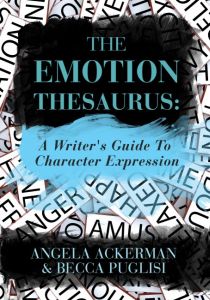 This book has been my #1 Go-To Writing Help book ever since it released. With 2 full pages of ideas about how to show character emotions for each of the 75 different entries, we can learn endless options for the physical signs, internal thoughts, and internal sensations (visceral reactions) for every emotion, whether the character is the point-of-view character or not.
This book has been my #1 Go-To Writing Help book ever since it released. With 2 full pages of ideas about how to show character emotions for each of the 75 different entries, we can learn endless options for the physical signs, internal thoughts, and internal sensations (visceral reactions) for every emotion, whether the character is the point-of-view character or not.
I could go on for pages and gush about the awesomeness of this book. *grin* Instead I’ll just point you to my post about how we can use this resource to improve our writing.
The Positive Trait Thesaurus: A Writer’s Guide to Character Attributes and The Negative Trait Thesaurus: A Writer’s Guide to Character Flaws
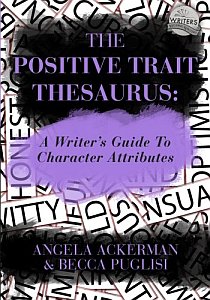
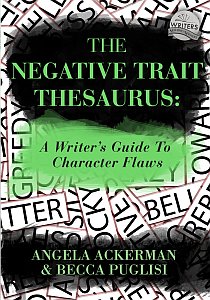 Finding the perfect mix of strengths and weaknesses for our characters can be difficult. We need to choose the right blend of strengths that make them admirable and worth rooting for—without making it too easy for them to succeed—and we need to figure out which flaws best fit our characters.
Finding the perfect mix of strengths and weaknesses for our characters can be difficult. We need to choose the right blend of strengths that make them admirable and worth rooting for—without making it too easy for them to succeed—and we need to figure out which flaws best fit our characters.
These books, cousins to the Emotion Thesaurus above, are great tools for creating three-dimensional characters. Check out the guest post by Becca (one of the co-authors) for more about how these books can be used in our writing.
The Emotional Wound Thesaurus: A Writer’s Guide to Psychological Trauma
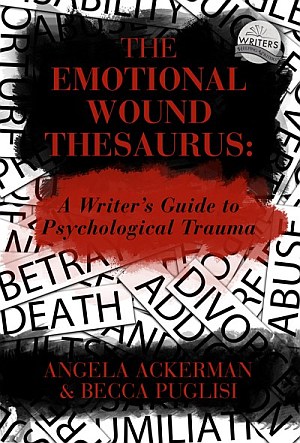 Readers connect to characters with depth, ones who have experienced life’s ups and downs. Of all the formative experiences in a character’s past, none are more destructive than emotional wounds. With 36 pages of introductory material explaining the psychology behind character wounds and 2 pages of details for each wound, we’ll learn how our character’s wound affects their needs, false beliefs, fears, reactions, personality traits, and triggers, as well as how they might overcome their wound.
Readers connect to characters with depth, ones who have experienced life’s ups and downs. Of all the formative experiences in a character’s past, none are more destructive than emotional wounds. With 36 pages of introductory material explaining the psychology behind character wounds and 2 pages of details for each wound, we’ll learn how our character’s wound affects their needs, false beliefs, fears, reactions, personality traits, and triggers, as well as how they might overcome their wound.
This book is another cousin to the Emotion Thesaurus above and is another great tool for creating three-dimensional characters, including a section on developing a wound for our villain too.
Internal Dialogue (Busy Writer’s Guides Book 7)
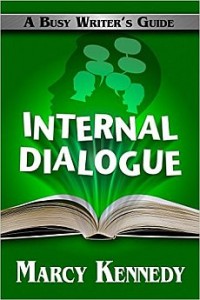 Internal dialogue is one of the most powerful tools in a fiction writer’s arsenal. It’s also one of the least understood and most often mismanaged elements of the writing craft.
Internal dialogue is one of the most powerful tools in a fiction writer’s arsenal. It’s also one of the least understood and most often mismanaged elements of the writing craft.
The techniques for how to properly use internal dialogue are critical for developing character arcs and motivations. This is advanced stuff that helps a writer go from technically proficient to a fantastic storyteller.
This is a must-read book for writers ready for more than the basics. See more about this book and my thoughts in Marcy’s guest post (and all of Marcy’s books in this series are great).
Self-Editing for Fiction Writers, Second Edition: How to Edit Yourself into Print
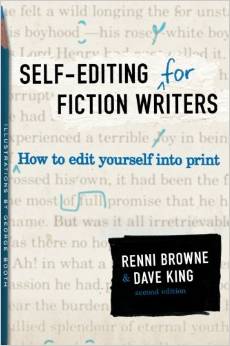 In this book, two editors step us through the process of editing our own work. They cover most of the major issues all writers—and newer writers especially—tend to struggle with in the pursuit of better writing.
In this book, two editors step us through the process of editing our own work. They cover most of the major issues all writers—and newer writers especially—tend to struggle with in the pursuit of better writing.
No matter how we plan to publish, we should strive for a cleaner manuscript. If we’re taking the traditional publishing path, quality writing craft makes it more likely an agent will request our pages. If we plan to self-publish, I wouldn’t recommend relying only on our own editing abilities and skipping an outside edit, but improving our prose the best we can on our own ensures that a freelance editor will be able to focus on the issues we can’t fix ourselves.
The Power Of Point Of View: Make Your Story Come To Life
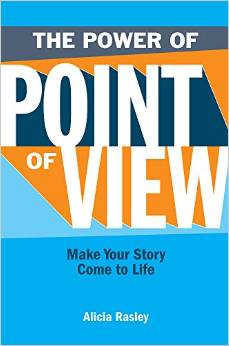 Many writers struggle to understand the differences between distant and close third person point of view, or when first person might work better than a close third (or vice versa). This book will make us a POV expert. Learn about the different styles of point of view, from omniscient third person to close first person—and everything in between.
Many writers struggle to understand the differences between distant and close third person point of view, or when first person might work better than a close third (or vice versa). This book will make us a POV expert. Learn about the different styles of point of view, from omniscient third person to close first person—and everything in between.
This book is perfect for those of us unsure about the differences between point-of-view styles or those who wonder which style is right for our story. Most of what I learned about POV started with this book.
Story Engineering: Master the 6 Core Competencies of Successful Writing
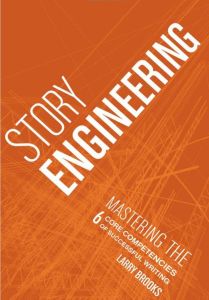 Yes, this book has a strong anti-pantser (writing by the seat of our pants) bias, and I’ve pointed out before that story failures are more often a symptom of not understanding story structure than with pantsing methodologies. Pantsing and plotting strategies can both fail or succeed, and in either case, those who understand story structure will be more likely to come out with a coherent story.
Yes, this book has a strong anti-pantser (writing by the seat of our pants) bias, and I’ve pointed out before that story failures are more often a symptom of not understanding story structure than with pantsing methodologies. Pantsing and plotting strategies can both fail or succeed, and in either case, those who understand story structure will be more likely to come out with a coherent story.
Pantsers able to ignore that naysaying, or those who plot in advance, will find a great discussion of story structure within these pages. Don’t miss my post or worksheet to help writers of any length stories use this structure.
Save The Cat! The Last Book on Screenwriting You’ll Ever Need
 This book isn’t my favorite for learning story structure (and it’s geared toward screenwriters rather than novelists), but it is a classic that literally “wrote the book” on many story structure ideas and strategies (like the concept of beats and beat sheets).
This book isn’t my favorite for learning story structure (and it’s geared toward screenwriters rather than novelists), but it is a classic that literally “wrote the book” on many story structure ideas and strategies (like the concept of beats and beat sheets).
It reveals audience (or in our case, reader) reasons for why stories are structured the way they are, and that’s good for every writer to understand. Don’t miss my post about how writers of any length stories can use this structure.
Hooked: Write Fiction That Grabs Readers at Page One & Never Lets Them Go
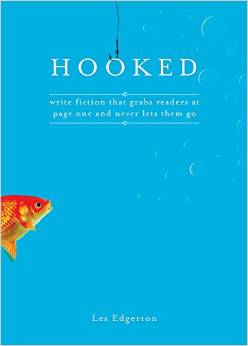 We’ve discussed the importance of story openings many times here before, from how to avoid first-page clichés to what makes readers close a book. Grabbing readers’ attention is an important skill because if our story has a bad beginning, no one will keep reading. Period. The end.
We’ve discussed the importance of story openings many times here before, from how to avoid first-page clichés to what makes readers close a book. Grabbing readers’ attention is an important skill because if our story has a bad beginning, no one will keep reading. Period. The end.
Whether we traditionally publish or self-publish, a great beginning is a necessity. This book covers the elements inherent to any great beginning and can help us overcome weak openings.
Other Books I’m Checking Out…
What are your favorite writing-related resources? Click To TweetMy list of recommendations is always a work in progress, especially as I’ve been slow to read new craft books. I’ve been keeping an eye on Janice Hardy’s books on conflict, showing vs. telling, and how to plan, plot, and revise our stories. Other books in the to-be-read pile by my desk include Wired for Story, My Story Can Beat Up Your Story, and Writing for Emotional Impact.
Other Favorite Writing-Related Resources
In addition to books, here are some of my favorite writing-related resources:
- One Stop for Writers by Angela and Becca, the same team as above
For many years, I kept the fantastic Emotion Thesaurus, open as a PDF on my computer while drafting, but now I keep a browser tab open to One Stop because this online version of all their thesaurus collections and tools is so much more complete. - Writers Helping Writers by Angela and Becca
Their blog always offers something new, from their own posts, posts by their Resident Writing Coaches (including yours truly), and posts of samples for whatever new thesaurus they have in the works (their newest addition is the Occupation Thesaurus) - Writer’s Knowledge Base by author/link-collector Elizabeth Spann Craig
Elizabeth’s Twitter account shares fantastic resources for writers that she finds all over the web, like a one-woman news source, and the WKB pulls all those resources together into one searchable database. Think Google for writers. - Scrivener: Writing tool for planning, drafting, and ebook formatting. I mostly use this for drafting, but the possibilities are endless. (For Windows and Mac)
- OneNote: A free, full-featured application for saving research notes, planning our story, capturing photos and ideas, etc. And everything is searchable. Squee!
- Dropbox: Never lose your writing again. Internet-based, password-secure storage to access your work from any connected device (computer, phone, tablet). Ta-da! Instant backups. *smile*
A few years ago, Angela shared her recommended resources for drafting our story, so check out her guest post as well.
Now, the Giveaway Winner!
As part of the giveaway, you all helped me out with great suggestions to add to the Writing Craft Master Lists I’m creating for us. Thank you so much!
So the contest was a wonderful success, and the winner of the $40 giveaway for the Thesaurus books is:
Shelley O’Rourke!!!
a Rafflecopter giveaway
Yay! Congratulations, Shelley! I’ll be in touch so you can let me know the book format you prefer. *smile*
Do you have any of the resources on this list? Do you second any of these recommendations? Do you avoid any like the plague or use a different resource you think is superior? What books or other resources are on your go-to recommendation list?
Pin It

Congrats to Shelley, and thank you again, Jami. And this post! Ah, I love you–not only for being in our corner, but also for directing my gaze to a few books I haven’t read. Looks like I have some book shopping to do… 🙂
Wow! I am thrilled! Thanks to Jami, and Becca and Angela, for being beacons of hope and guides on my journey to becoming a writer!
Yay! Congratulations and good luck with your writing! 😀
Another great list! And I second the One Stop for Writers site. Love its features!
I’m current reading Story Trumps Structure, which has been really good so far. And if I were making this list, I’d make sure Jami Gold’s famous beat sheets were in the writing resources section. 🙂
That sounds like my kind of book. I’m getting it too as well as Hooked listed above. Good stuff!
Aww, thanks for the kind words, Julie! And ooh, that book sounds right up my alley. As I always say, the beat sheets are just guidelines, and structure just ensures our story feels like a story. Thanks for sharing! 🙂
In like a lion! So many resources. How does a writer find time to write when he/she is so busy reading these?
Hi Mike,
LOL! Those are books I’ve read over a period of 8-9 years, so just like my overwhelming Master List posts, we shouldn’t feel like we need to learn everything at once. 🙂 And yes, I don’t have much time for reading new ones anymore, so I understand the concern. Thanks for the comment!
Story Engineering was going to be my pick too! In fact, that and Save the Cat! were on my recent list of ten helpful books for writers.
I’ve never done a link in a quote before, so hopefully this works…
Hi Deborah,
Thanks for sharing your list! 🙂
Well done!
I’m glad to see some of my favorite books on your list! I’ve not been very good about keeping up with the newer books, so this is a big help.
One resource set I’ve come across that pairs well Becca and Angela’s books is Maim Your Characters by Samantha Keel. She delves more into the nitty-gritty of injuries and how to write them. Her books are great for those of us who love to inflict pain on our characters.
And for those looking to become more inclusive writers, the website Beyond the Rainbow has a lot of great information and resources.
Thank you again for the recommendations!!!
Hi Bran,
Oh, great additions! I could go on for days with recommendations but forced myself to limit the post length. LOL! Thanks for sharing and adding to our list! 🙂
[…] We all want to get better at our craft, and there is an overwhelming amount of information out there. Melissa Donovan asks: whose writing advice should you follow?, while Jami Gold wants to know what your favorite writing-related resources are. […]